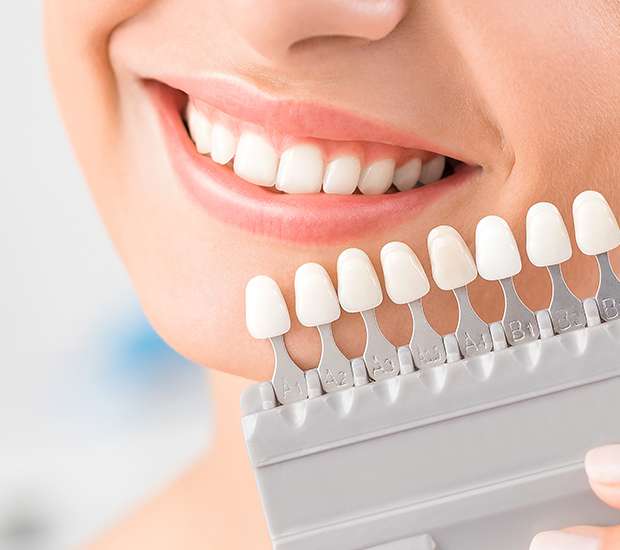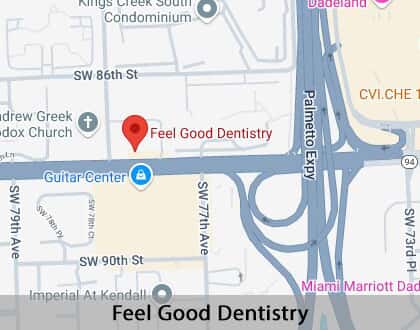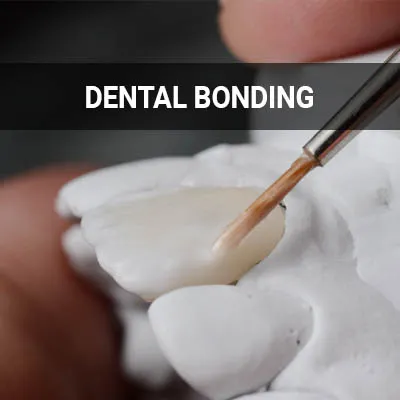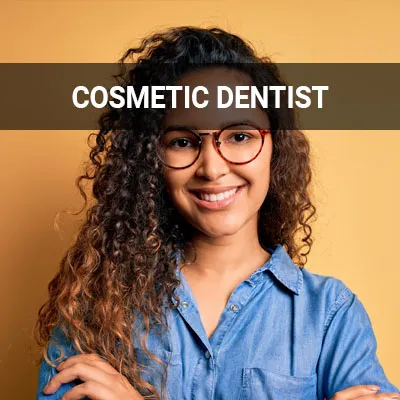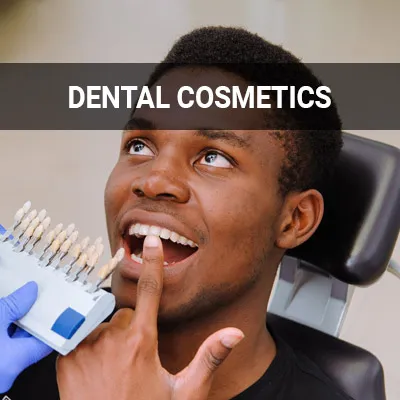Dental Veneers Miami, FL
Patients who want to improve the appearance of their smiles may consider dental veneers. Although people often use the two terms interchangeably, they have some differences. Both procedures can help improve a patient's smile. Knowing the difference between them can help you choose the best option for you.
From color to size and shape, dental veneers can provide a solution for people who want a better-looking smile. These procedures are available at Feel Good Dentistry in Miami and the surrounding area. Call us at (305) 230-4484 to schedule a consultation and learn which option is the best for you.
Choosing Between Different Types of Dental Veneers
Although there are many ways to improve the appearance of a person's smile, there are only two basic types of veneers:
Porcelain Veneers
Porcelain veneers (sometimes called indirect veneers) are usually made in a lab, although some dentists have the skills and technology to make them in the office. They are very strong, especially after bonding to the teeth, and they do not stain easily. A considerable amount of preparation is required before porcelain veneers can bond to the teeth. For example, it may be necessary to reshape the teeth by removing some of the enamel. This is to ensure that the veneers can adequately bond to the teeth and to avoid having the teeth look too big once the veneers are in place.
Many patients experience sensitivity after having their teeth altered in this way, but it goes away over time. A study published in the journal Clinical Oral Investigations even found that porcelain veneers could be bonded to existing composite restorations without apparent disadvantages. If porcelain veneers are created in a lab, the patient has to wait for them to be made and return at a later date to have them put on.
Composite Resin Veneers
Composite resin veneers (sometimes called direct veneers) can be done in one appointment because they are created directly on the patient's teeth. The tooth preparation for composites is less invasive than for porcelain. Whereas enamel is removed to make room for porcelain veneers, it only needs to be texturized a little for composite resin veneers to adhere correctly.
Applying composite resin veneers is an art form. The dentist applies thin layers of resin to the tooth and uses a special light to cure each layer before applying the next one. When enough layers are built up, Feel Good Dentistry sculpts the resin to match the teeth. The result is better-looking teeth, and no one can tell they are not natural.
A study published in the Open Access Macedonian Journal of Medical Sciences concluded that porcelain veneers have excellent longevity and esthetic properties, but that composites are a good alternative. The drawback of composites is that they do not last as long. On the other hand, if a patient's teeth are healthy, they may not want to have them permanently altered to make way for porcelain veneers, and composites may be the way to go. Ultimately, it is up to the patient and practitioner to decide together.
“Although there are many ways to improve the appearance of a person’s smile, there are only two basic types of veneers.”
How To Care for Dental Veneers
After the veneers are in place, a follow-up appointment will be made to assess the patient's teeth and bite. At this appointment, we will also check the gums to make sure they are not being irritated through contact with the veneers. The patient's new smile is surprisingly easy to take care of at this point. All that is needed is regular brushing and flossing, as well as the usual twice-yearly checkups. A non-abrasive toothpaste and soft-bristled toothbrush should be used to avoid scratching the veneer surfaces.
“The patient’s new smile is surprisingly easy to take care of at this point.”
Check out what others are saying about our dental services on Yelp: Dental Veneers in Miami, FL
Dental Veneer Aftercare
The Canadian Dental Association explains that good dental hygiene is essential to maintain the appearance and function of new veneers. Brushing and flossing after meals and visiting the dentist for regular check-ups are critical aspects of proper maintenance. Skipping these steps can cause decay and cavities to develop between or under the veneer shells.
Veneers can also crack, break or loosen under pressure. Patients should avoid chewing hard candies, ice, or similar items. During the first few days after the procedure, patients should stick to soft foods and avoid consuming nuts, hard bread, popcorn, and seeds. Wearing a bite guard at night can help prevent grinding that may wear down veneers. Veneers are more prone to staining, so we also recommend patients avoid substances like tobacco, red wine, and coffee.
“Brushing and flossing after meals and visiting the dentist for regular check-ups are critical aspects of proper maintenance.”
Questions Answered on This Page
Q. How does one care for dental veneers?
Q. How are dental veneers placed?
People Also Ask
Q. Can cosmetic dental services improve confidence?
Q. What are some cosmetic dentistry treatment options?
Q. How should you choose the right treatment and cosmetic dentist?
Q. When should people seek an implant dentist?
Q. What are dental aesthetics?
Q. How can dental cosmetics improve oral health?
Q. What are some of the types of cosmetic dental treatments?
Frequently Asked Questions
Q. How long do dental veneers last?
A. With proper care, porcelain veneers can last 10 to 20 years. Composite veneers can last around four to eight years. Both types of veneers may need to be polished periodically to help maintain them.
Q. How much do dental veneers cost?
A. The cost of these procedures may vary. While veneers are not usually covered by insurance, financing is often available. People interested in this procedure should contact their insurance provider to learn more. Composite resin veneers cost less than porcelain, but they will have to be polished and replaced more often.
Q. Are dental veneers permanent?
A. Composite veneers are not permanent as patients can have the resin removed. However, porcelain cannot be removed. As the teeth are filed down to fit porcelain veneers, the patient will always need veneers or crowns.
Q. Can damaged dental veneers be fixed?
A. The porcelain in veneers can chip if damaged. A broken porcelain veneer can be repaired or remade. Resin veneers can also be remade to fix chips or cracks. In the case of a porcelain veneer falling off, a cosmetic dentist can reattach it.
Q. Is getting veneers painful?
A. Discomfort is rarely reported during the process of getting veneers. There are some who report sensitivity after the veneers have been placed. However, this fades with time.
Dental Terminology
Choose the Right Procedure for Your Needs
Dental veneers are great options for smile enhancement. Patients should consider different factors like personal needs and costs before making a decision. Our team at Feel Good Dentistry is here to answer your questions and help you choose the right procedure. Call us at (305) 230-4484 to schedule an appointment.
Helpful Related Links
- American Dental Association (ADA). Glossary of Dental Clinical Terms. 2025
- American Academy of Cosmetic Dentistry® (AACD). Home Page. 2025
- WebMD. WebMD’s Oral Care Guide. 2025
About our business, license, and website security
- Feel Good Dentistry was established in 1998.
- We accept the following payment methods: American Express, Cash, Check, Discover, MasterCard, and Visa
- We serve patients from the following counties: Miami-Dade County
- We serve patients from the following cities: Miami, Doral, Hialeah, Fontainebleau, Homestead, Sweetwater, Coral Gables, Kendall, South Miami, Westchester, Pinecrest, Dadeland, Coconut Grove, Palmetto Bay, and Brickell
- FL (License #DN14923). View License Information and Specifics
- National Provider Identifier Database (1528403946). View NPI Registry Information
- Healthgrades. View Background Information and Reviews
- Norton Safe Web. View Details
- Trend Micro Site Safety Center. View Details
Back to top of Dental Veneers
